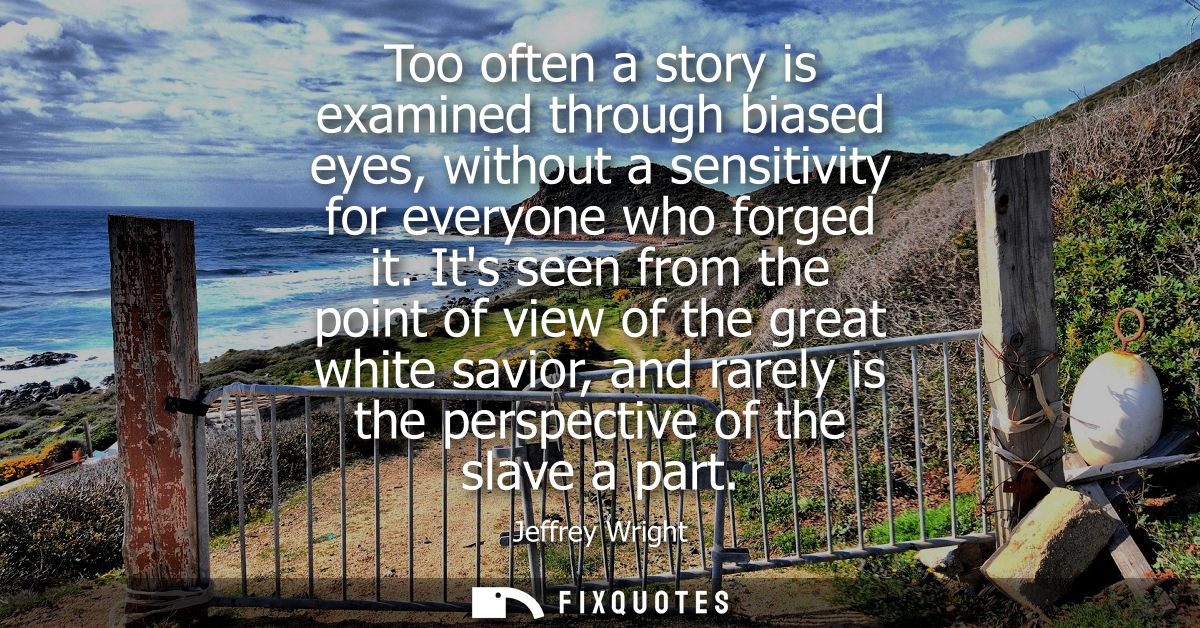"Too often a story is examined through biased eyes, without a sensitivity for everyone who forged it. It's seen from the point of view of the great white savior, and rarely is the perspective of the slave a part"
About this Quote
Stories rarely arrive neutral; they are filtered through vantage points that reward some and silence others. Celebratory narratives often elevate a redeeming figure while relegating those who endured the harm to the background. Framed this way, oppression becomes the set dressing for a privileged protagonist’s moral awakening. Structural violence is softened into sentimental uplift, and the audience is invited to admire benevolence rather than confront complicity.
To say that a story is forged is to acknowledge labor, risk, and ingenuity. The enslaved were not passive scenery; they built families under duress, preserved languages and faiths, negotiated, revolted, created music and literature, petitioned courts, and theorized freedom. Erasing their perspective reproduces the dehumanization that slavery required: people become props, data points, or cautionary tales rather than thinkers and actors. The result is a false history with flattered heroes and muted truth.
Sensitivity here is not fragility; it is discipline. It asks: Who is centered? Who narrates? Who profits? Which archives are deemed authoritative, and which testimonies, oral histories, spirituals, letters, petitions, maroon chronicles, are sidelined? It demands that creators and educators consult descendant communities, foreground primary sources by the oppressed, and embrace narrative forms, polyphony, counter-storytelling, that resist a single heroic lens.
Re-centering the enslaved changes the moral geometry. It refuses neat closure, exposes the webs of law, finance, and everyday compliance that sustained bondage, and acknowledges allies without letting them dominate the frame. It turns history from a stage for absolution into a field for accountability.
The stakes are not merely aesthetic. Memory trains policy and habit. When saviorism sets the template, modern institutions reenact paternalism in philanthropy, development, and justice. A richer canon, one that honors those who actually bore the heat and hammered the shape, sharpens our capacity to recognize power, agency, and repair. Such storytelling does not diminish anyone; it restores proportion, complexity, and dignity, allowing the past to teach without flattering, and the present to change without illusions.
More details
About the Author

